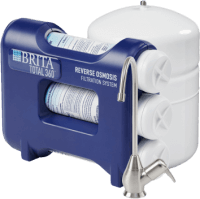The Ultimate Water Filtration Media Guide
You’ve decided to take a step toward providing your home with filtered water—that’s great! But before you make your purchase of a water filtration system, it’s a good idea to familiarize yourself with the different types of filtration media used in these systems.
Not all water filtration systems are built equally. The right filtration media—the material that captures the harmful contaminants in your water—will depend on what contaminants you’d like to reduce.
Water filter media can be made of naturally occurring materials, including sand, rock and various synthetic materials. Other filters will feature more than one form of media, which can help reduce a wider range of contaminants.
What is the best material to filter water?
In short, the best material to filter water will depend on your unique needs. Some people simply want to reduce the smell and taste of chlorine, while others have more concerning contaminants including lead and PFAS. Since there isn’t really one type of filter media that’s better than the other, it’s important to understand the different types so you can properly target your water’s contamination. The following are a few filter media examples that are most commonly used in water filtration systems.
Activated carbon
Carbon is a common and extremely effective media for adsorption. (Note that adsorption is when molecules and ions are attracted to a surface, as opposed to absorption, where molecules are soaked up like a sponge.) Activated carbon is a powerful way to reduce unpleasant odors and tastes from your water.
This water filter material is made from organic substances that adsorb contaminants. A few different examples of the material used to create activated carbon filters include wood, bamboo, coconut shell and coal.
Activated carbon is effective at reducing chlorine taste and odor, a common issue for households with municipal water supplies. Because of its effectiveness, water filtration systems of all kinds use activated carbon, often paired with other additives focused on reducing specific contaminants. Both under sink and whole home systems can be fitted with filters that feature activated carbon.
Find a Water Filtration System or Filter
That Uses Activated Carbon Filter Media
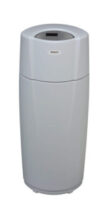
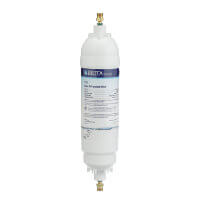
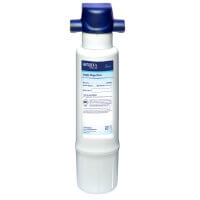
Carbon block
Carbon block filters use activated carbon bound together into block form. Like activated carbon granules, they filter out chlorine and sediment. Carbon block filters are used in both whole home and under sink filtration systems, often with additives to reduce contaminants such as lead, PFOAs, etc.
Find a Water Filtration System or Filter
That Uses Carbon Block Filter Media
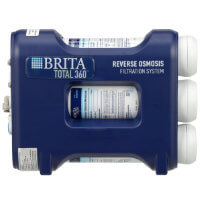
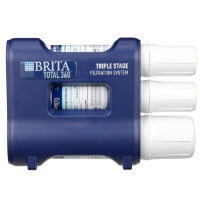
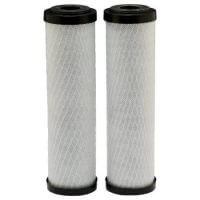
String-wound and pleated
String-wound filters are typically made of cotton and fit into whole home systems. String-wound filters reliably capture sediment particles that can harm home appliances, faucets and plumbing. If sediment is your main concern, string-wound is an excellent water filter media choice, particularly when dealing with particles as small as 10 microns. String-wound filters are also a great way to eliminate low levels of red water iron, also known as ferric iron.
Pleated filters have several benefits in common with string-wound filters, including the ability to eliminate low levels of red water (ferric) iron. Pleated filters have long lifespans, thanks to their expanded surface area.
Both pleated filters and string filters can vary in the size of particles they can effectively remove. This is known as micron rating and every sediment filter has one. The lower the micron rating, the smaller the particle size captured. Similar to string-wound filters, the size of the targeted particles will depend on how tightly layered the media is, giving homeowners a little flexibility with which filter is right for their home.
Find a Filter That Uses String
Wound or Pleated Filter Media
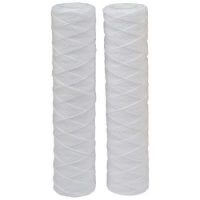
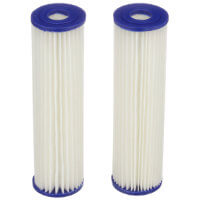
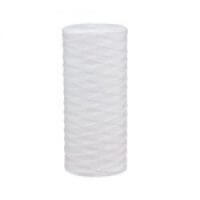
Flow and Capture Technology (FACT)
A unique and powerful filter media, Flow and Capture Technology (FACT) is made of carbon-impregnated cellulose-based fiber that adsorbs chlorine taste and smell, and captures high levels of particles that could be harmful to your water-using appliances and fixtures.
Fitting into most under sink and whole home filtration systems, FACT filters are uniquely designed to give you higher levels of filtration, better flow and a longer filter life.
Find a Filter That Uses FACT Filter Media
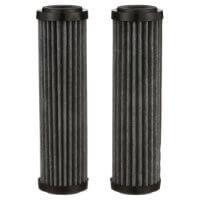
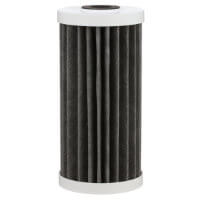
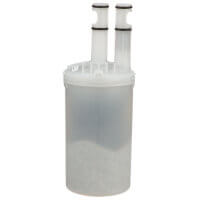
Reverse osmosis
EcoPureHome reverse osmosis filtration systems feature three unique filters: a pre-filter, a membrane and a post-filter. Some of these filters use blended media, or a combination of materials that can reduce specific contaminants in tandem. Each filter targets different contaminants, making reverse osmosis (RO) systems one of the most thorough options available.
The pre-filter, or the first filter that the water will travel through, is a carbon block filter. This filter, as discussed above, will reduce chlorine smell and taste, which will protect the membrane.
The membrane of an RO system is semi-permeable. It neither captures nor absorbs. Instead, it rejects contaminants, flushing them down your drain. This is the stage where contaminants including cysts, lead and total dissolved solids are reduced and flushed away.
Next, the water is moved into the post-filter, which is another carbon block. You can think of this filter as the polishing filter which removes any lingering odors. In some unique systems, such as the Brita Total360 Reverse Osmosis system, additional filtration components may be added to target contaminants like PFAS, or “forever chemicals.” Not every RO system is designed to capture PFAS, so if this is a concern for your household, be sure to look specifically for a system that’s capable of reducing these chemicals.
Ion exchange
While water softeners don’t filter your water as a true filtration system would, the ion exchange that occurs within the resin tank is another form of filtration that reduces levels of calcium and magnesium in your water. This mechanism is made possible by the resin beads inside a water softener’s tank. These beads have a negative charge, which attracts and binds to the positive charge of calcium and magnesium. Drawing these minerals out of your water turns it soft.
Hard water minerals can be destructive to your home, so the softening process can help you keep your water-using appliances running for many more years. If you suspect you have both hard water and other contamination issues, there are hybrid water treatment systems that can help you work to reduce hard water minerals and contaminants, such as chlorine taste and odor. These systems use a combination of different water filter media, including ion exchange, to ensure your water is soft and filtered.
Find a System That Uses
the Ion Exchange Method
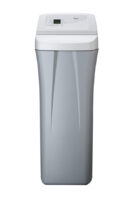
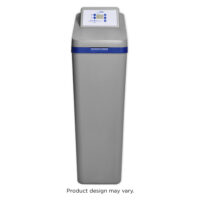
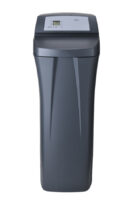
Find the water filter that will fit your needs.
As you can see, there are many options when it comes to picking between water filter media.
The best material to filter will depend entirely on your home’s needs and your own goals. No matter what water filtration system you decide upon, make sure it has third-party performance and a safety certification from NSF, WQA, or another reputable organization that verifies performance. If you want to narrow down your search for the right water filtration system, take a look at EcoPureHome’s Interactive Shopping Tool, which will help you understand your home’s water and which system will make the most difference in your home.
